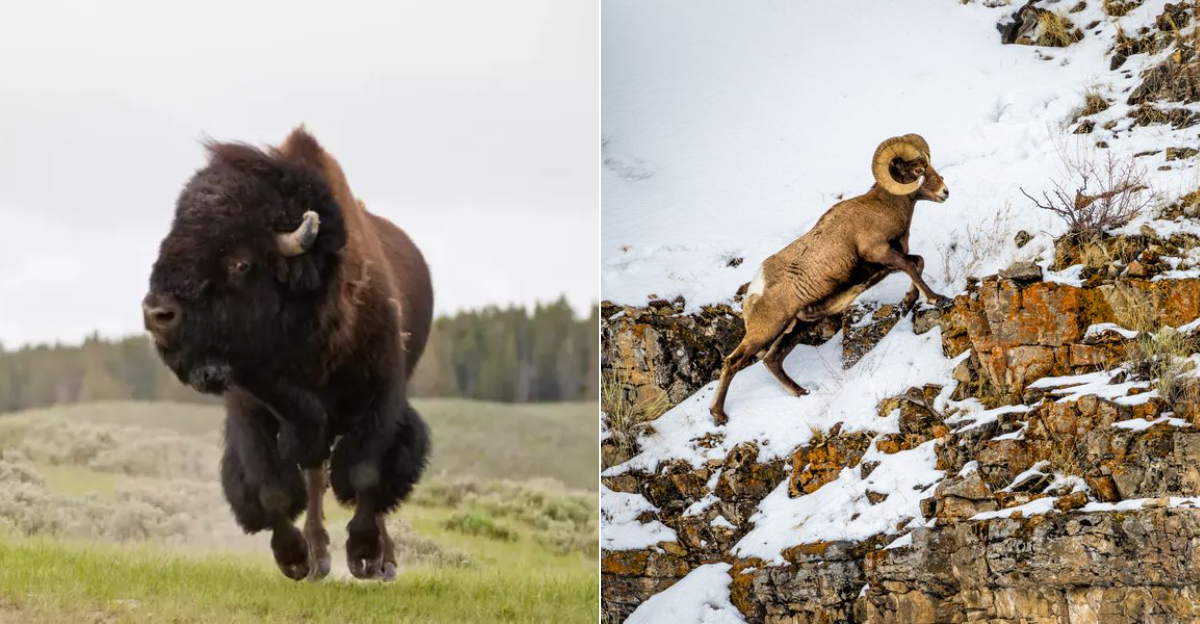Yellowstone is pure magic. A wild, untamed world where nature still rules.
Walking its landscapes, I feel tiny—amazed by the incredible creatures here. Bison roam free in open meadows. Wolves silently stalk the woods. Each animal tells a story of survival, strength, and beauty.
Curious about what makes Yellowstone truly wild? I’ve got six animals that will blow your mind. Get ready to meet the most fascinating creatures roaming this legendary park!
1. Grizzly Bears: Masters Of The Wilderness
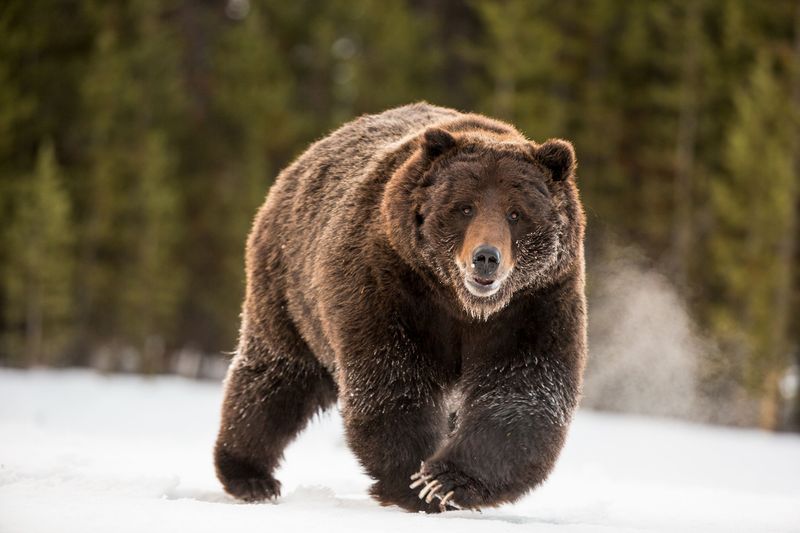
“Grizzly at three o’clock!” our guide whispered excitedly. Through my binoculars, I watched the magnificent creature digging for roots, completely unaware of our awestruck group.
Yellowstone’s grizzlies sport that shoulder hump – actually a mass of pure muscle that powers their incredible digging abilities.
These intelligent omnivores have an exceptional sense of smell, detecting food from miles away and remembering feeding locations for years.
Despite their fearsome reputation, grizzlies typically avoid humans. When visiting their territory, I always carry bear spray and make plenty of noise on trails. Mutual respect is key to coexistence.
2. Mysterious Gray Wolves: The Comeback Predators
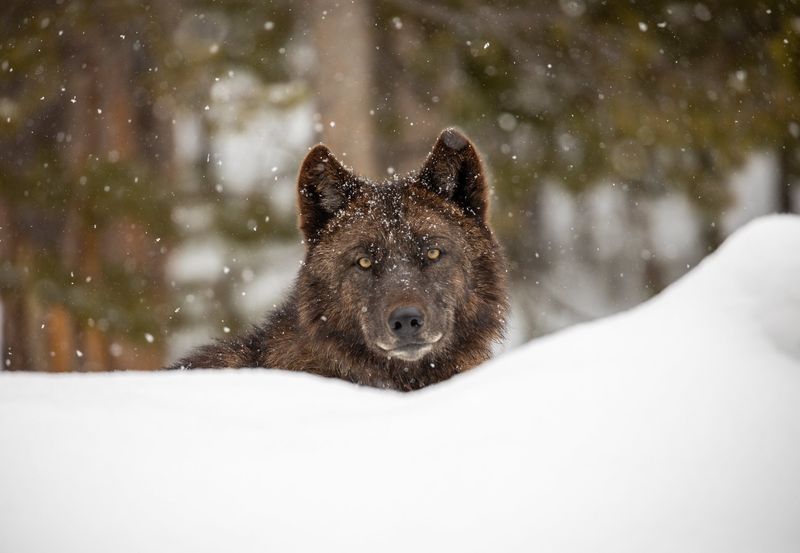
These remarkable predators have transformed the entire ecosystem in the Park.
Wolf packs function as highly organized family units with complex social structures. The alpha pair leads hunting expeditions and makes crucial decisions for the group.
Their hunting strategy relies on teamwork – wolves can bring down prey animals many times their size by working together.
Scientists studying Yellowstone’s wolves have documented how their return triggered a cascade of positive changes throughout the park, from healthier vegetation to more diverse wildlife populations.
3. Mighty American Bison: The Park’s Living Icons
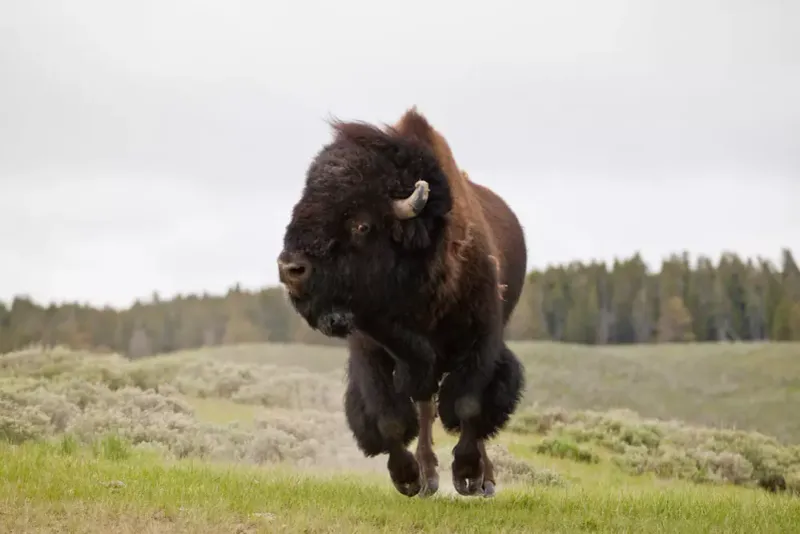
Standing eye-to-eye with a 2,000-pound bison was simultaneously the most terrifying and exhilarating moment of my Yellowstone trip.
Don’t let their slow, lumbering appearance fool you! Bison can charge at speeds up to 35 mph when threatened. During summer, males engage in dramatic head-butting contests for mating rights, shaking the ground with their power.
Fun fact: Bison are excellent swimmers and can cross rivers with ease, their massive heads held high above the water like furry battleships navigating the current.
4. Majestic Elk: The Bugling Bachelors
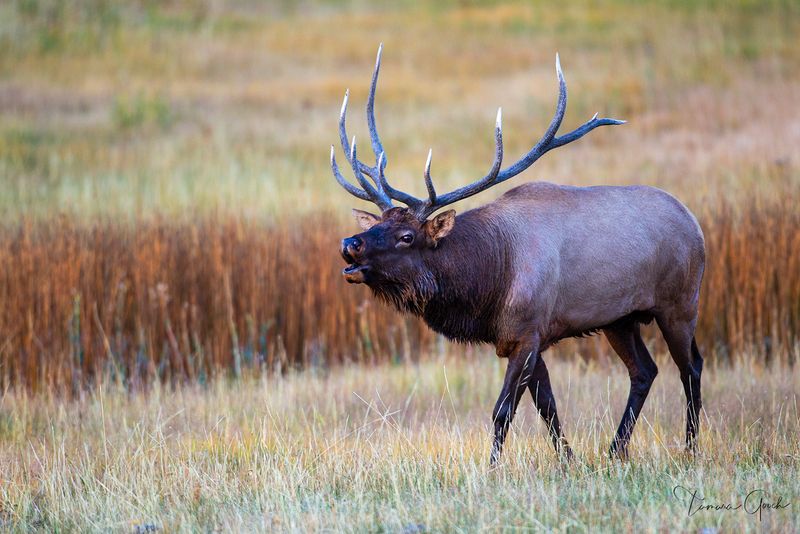
I’ve spent hours watching these impressive animals gather their harems and challenge rivals with antlers that can span five feet!
Elk are surprisingly adaptable creatures, migrating seasonally between high mountain meadows in summer and sheltered valleys in winter. Their diet shifts with the seasons too – from grasses to woody bark when snow blankets the landscape.
Female elk (cows) form tight-knit groups to protect their vulnerable calves from predators.
With their reddish-brown coats and light-colored rumps, a herd of elk moving through golden autumn aspens creates one of Yellowstone’s most picture-perfect scenes.
5. Acrobatic Bighorn Sheep: The Cliff-Dwelling Daredevils
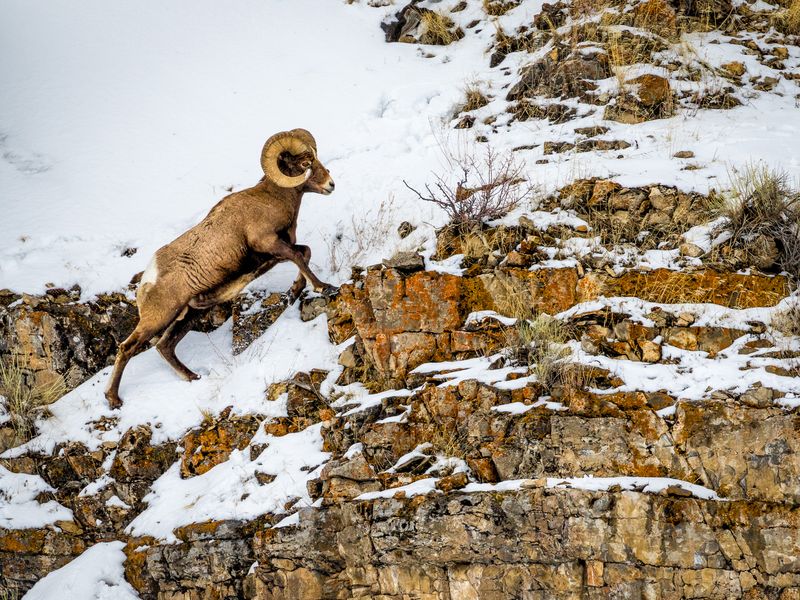
The rams’ massive curved horns can weigh up to 30 pounds – more than all the bones in their body combined! During mating season, males engage in spectacular head-butting contests that can be heard echoing through canyons.
Specialized hooves with soft centers and hard edges give bighorns their remarkable climbing abilities.
They navigate sheer rock faces that would challenge the most experienced human climbers, finding safety from predators in places few other animals can reach.
6. Elegant Trumpeter Swans: The Graceful Giants
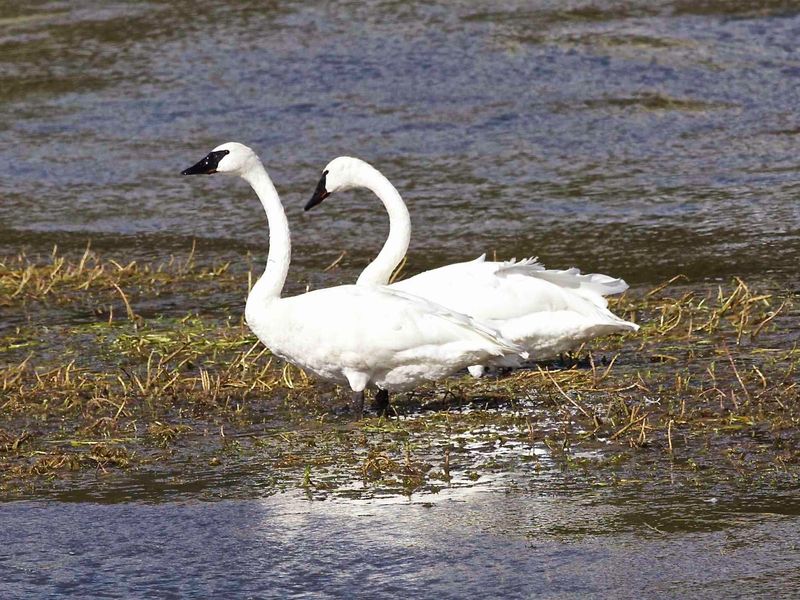
North America’s largest waterfowl nearly disappeared in the early 1900s, with just 69 birds remaining in Yellowstone.
These magnificent birds mate for life, forming bonds that can last over 20 years. Their distinctive trumpet-like call carries across Yellowstone’s waters, announcing their presence long before they come into view.
Weighing up to 30 pounds with wingspans reaching 8 feet, trumpeters require a runway-like stretch of water to become airborne.
Once endangered, their comeback story represents one of Yellowstone’s greatest conservation triumphs.
